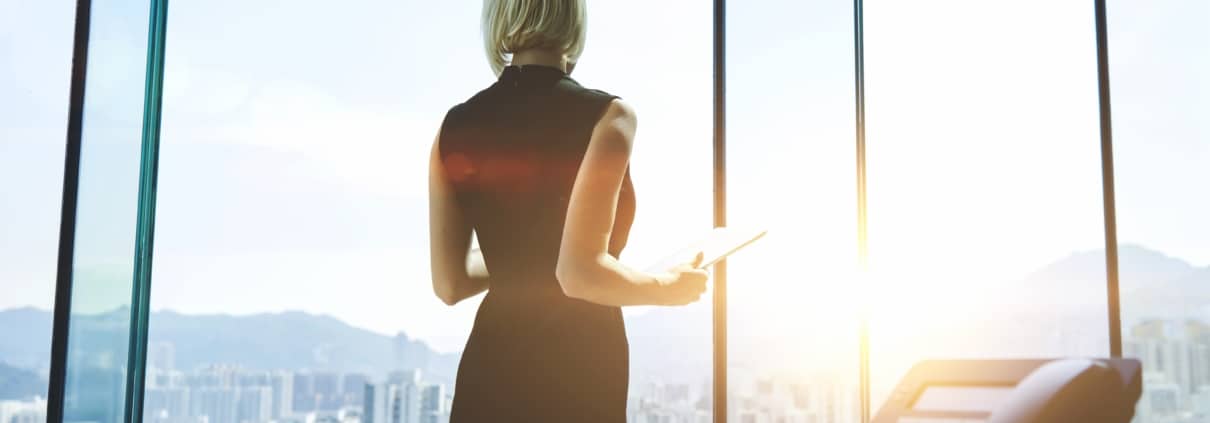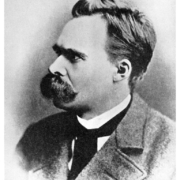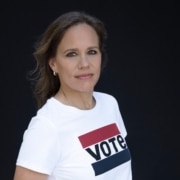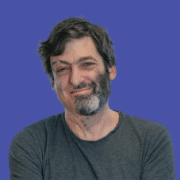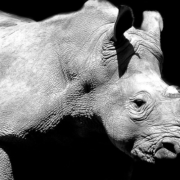How CEOs Should Think About Rebuilding America

The only thing more complicated than building a world class economy from the ground up is rebuilding one after disaster strikes. Companies face immense challenges in restoring operations following a global economic shutdown that shredded business plans and forced once-prosperous enterprises to close their doors overnight.
What are CEOs to do? In ordinary circumstances, the CEO’s job is a balancing act of competing priorities. They have to manage resources and coordinate with a board of directors, serving as the face of the company—a complex job in a complex market environment even in the best of times. And we are not in the best of times. Far from it. It took about a decade to bounce back from the 2008 financial crisis, which was triggered by systemic flaws in the economy—and the current crisis, brought about by more external factors (i.e. the novel coronavirus) is worse. Six million more people are looking for jobs than during the Great Recession, and COVID-19 has taken around 130,000 lives in the United States (over 500,000 globally). The Congressional Budget Office forecasts a $3.9 trillion drop in GDP and the highest unemployment rate since the Great Depression.
CEOs could face these unprecedented circumstances by making adjustments according to hints that the plan is beginning to succeed or fail. In effect, this would be winging it, trying ideas and gauging the reaction, quickly dropping initiatives that fall flat. Coca-Cola in 1985 tried to boost sales with “New Coke,” but the company terminated the idea fast as sales of the unpopular new soda fizzled. Likewise, Netflix did this a decade ago when it tried to create a new brand, Qwikster, an idea that was dropped almost immediately after it was introduced.
It’s not surprising that winging it often fails. The economy is complex, and can seem insuperably chaotic, because it’s not the product of a single mind but the sum of people’s economic choices. This puts an untold amount of factors in play, each interacting with the other. With so many competing motives and desires, how can anyone predict what will happen?
CEOs can rely on experience and intuition to guess what to do in any particular circumstance. Sometimes that works, but the more foreign the circumstance, the less likely it is that the guess will pay off. Taking a more systematic approach is a way to limit the impact of luck and increase the odds of success by acting deliberately. That can often mean changing your mind or your tactics based on new information. This isn’t to recommend flip-flopping, the political scientist and organizational behavior researcher Philip Tetlock remarked, in a 2020 study. Accurate forecasters of events tend to change their minds frequently, but this is paired with an inclination for gradual revision. “The best forecasters seemingly experience the prediction task as a long sequence of slight surprises rather than a short string of hard collisions with reality,” Tetlock and his colleagues concluded. “A pattern of frequent, small belief adjustments helps identify forecasters and decision makers who maintain an edge in a complex, turbulent world.”
Air Force pilots are an example of those decision makers par excellence. They figured out the secret to victory was taking a structured approach for making rapid directional changes to adapt to unknown circumstances. Air Force Col. John Boyd pioneered the development of a four-step mental model that he called the OODA loop (Observe, Orient, Decide, Act), used to help pilots assess and deal with threats in high-speed combat. The same framework is readily adaptable for peacetime use to help CEOs become the fast-evolvers they need to be to survive—or better yet, thrive—in an uncertain business environment.

The magic of the loop isn’t so much the originality of the steps themselves. Boyd’s work was a refinement of common practice among the best fighter aces. What he saw that others missed was that the best way to deal with novel situations was to adopt multiple mental models—something businesses tend to not want to do. Businesses often find a path that works and try to stick with it, even when that path is no longer viable (see what happened to once-great firms like Kodak). The OODA loop is a behavioral algorithm leaders or companies can employ when more rigorous and time-consuming efforts, like cultural experimentation using the methods of behavioral science, aren’t on the table.
The first step in Boyd’s process is to observe the situation carefully, absorbing the facts without attempting to apply any analysis. So, in our present circumstance, we note that we’re in the midst of a global pandemic. We’ll review the state of our competition and see how they’re faring. We’ll read all of the news and reports relevant to our industry. Some of this information will be inaccurate and much of it will involve a lot of guesswork, as no one piece of intelligence ever tells the whole story. In fact, the sheer amount of data available usually becomes overwhelming. As situations change rapidly, the most important skill will be prioritizing the constant flow of information to focus on what’s most important. Given the circumstances, some companies that may have been in a strong position a few months ago now see mere survival as the primary objective. Others will try to find a way to grow despite the chaos.
Either way, the CEO’s next task in this process is to orient himself to make the best use of the information gathered. Do existing plans and models fit the circumstances? In the post-pandemic world, they almost certainly won’t. Public expectations have changed, and a once-strong economy has suffered a body blow. Supply chains and international trade have been disrupted. So you need to adapt. This means assessing the data and developing a new model or set of models that best fits the key facts and describes a possible way forward. This is the critical step that separates the winners from the losers, as the ones who cling to outdated ways of doing things will fail when circumstances change. In times like the present when everything has changed, fresh approaches are needed.
The head of a restaurant chain might, to take a simple example, assess the costs of real estate for indoor seating and wait staff and see a way forward as a delivery or take-out option only as consumers have become more accustomed to eating that way during the shutdown. Rather than simply assume going back to the old way of doing things is the right choice, the CEO should calculate the costs, tradeoffs, and likely outcome for each scenario.
Once the potential approaches have been identified, the next step is to apply judgment to decide which of them presents the best course of action. Such a choice is based on imperfect information and reflects a judgment about what’s likeliest to succeed. The fourth stage is the simplest. It’s the time to act, which means implementing the choice.
After action is taken, the process loops back once more to the observation stage so that the effectiveness of the CEO’s choice can be evaluated. The data might reveal problems with the CEO’s latest initiative, and it could be time to adapt, or to stay the course. This framework is designed to constantly repeat the evaluation and re-evaluation process until the desired goals have been achieved. Failure means the selected mental model used wasn’t the right one, and it’s time to try another. This is why it’s so important to cultivate a diversity of mental models.
While not using the O.O.D.A. Loop methodology, Netflix in trying to find “the best” model found it was actually better to have multiple models. The video streaming giant created what it called the Netflix Prize as a contest that would enhance the accuracy of its movie recommendation algorithm. Netflix used to provide customers with movie recommendations derived from movie ratings that each user provided in the past—five stars for a great film or TV show, one star for a bomb. The company wanted to improve the measured accuracy of this system by 10 percent. So the Netflix Prize was a $1 million reward offered to anyone who could come up with an algorithm to deliver that level of improvement.
The first team to come close achieved an 8.4 percent improvement, but it didn’t use a single algorithm. Instead, the winners blended 107 algorithms to come up with results that bettered any single algorithm entered into the contest. Soon thereafter, another team took home the $1 million prize after achieving the 10 percent improvement with a blend of hundreds of predictive models. Netflix eventually abandoned the star-rating system in favor of developing and promoting its original content, but the lesson about models is important.
Model averaging works because each algorithm is developed to describe a slice of reality, without necessarily capturing every nuance. The realities of the economy are far more complex than can be comprehended in a single equation. So taking multiple slices of reality and averaging them together captures more of what’s happening and brings the final prediction closer to the truth. And this result isn’t limited to video content preferences.
The Heritage Provider Network, to take another example, created its Health Prize several years ago as an incentive for teams to develop an algorithm that could use historical claims data to predict future hospital admissions. As with the Netflix contest, the winning candidates each used a mix of models, but the final contest winner, Team Powerdot, took the concept a step further. The team pocketed the $500,000 reward not just by blending a diversity of models, but by blending the team itself. The top-performing individuals in the early stages of the contest banded together to form the winning team.
Human talent also benefits from diversity, and cognitive diversity is critical for business success. Instead of being surrounded by “Yes men,” CEOs should hire people with different upbringings, education, and backgrounds to cultivate multiple perspectives and approaches for any given problem. Each individual member of the executive team should be able to come to the table with a unique take on what’s happening that can help guide the decision-making process. Cognitive diversity is the antidote to groupthink.
What might help cultivate diversity is the ubiquitous experience of only being able to conduct meetings with Zoom or other teleconferencing software. This will enlarge the willingness for firms to entertain remote work, making it a lot easier to attract better and more diverse talent by opening up job listings to anyone in the country, or better yet, anyone in the world. It may not be possible for every organization to take advantage of this option, but it’s the sort of change that needs to be explored.
The opportunities are there to emerge stronger and better able to adapt to whatever else the future may bring as long as there’s a willingness to change long-held beliefs and mental models.
Joseph Byrum is chief data scientist at Principal. Connect with him on Twitter @ByrumJoseph.
Lead image: GaudiLab / Shutterstock

